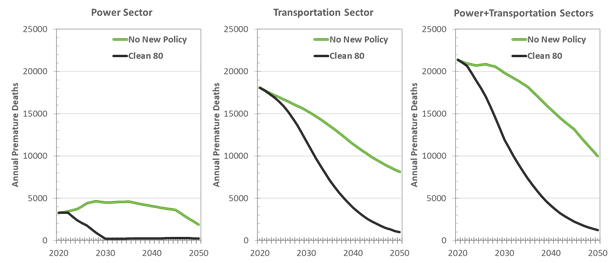
1/ EXCLUSIVE White House backs 2030 milestone on path to net zero grid. But what you may have missed, is @Reuters also broke the release of new @EnergyInnovLLC @GoldmanSchool @gridlab research showing how we can do it. #2030Report. reuters.com/business/susta…
2/ First the #2030Report, a supplement to the 2035 Report, outlines a pathway to achieving an 80% clean grid by 2030 while rapidly electrifying transportation and buildings, with analysis from @GoldmanSchool @Nikit_Abhyankar @phadkeamol & Umed Paliwal. energyinnovation.org/publication/20…
3/ The report finds achieving an 80 percent clean electricity grid by 2035 is technologically feasible, would not raise customer costs or compromise reliability, and would deliver major benefits to all U.S. regions including $1.5 trillion in clean energy capital investments. 

4/ The #2030Report also finds an 80x30 CES would avoid $1.7 trillion in health/env costs, including 93,000 avoided premature deaths, through 2050. Add in transportation electrification & together we can avoid 240,000 premature deaths and $3 trillion in health/env costs by 2050. 

5/ There's significant convergence between rigorous studies that we can do this. And utilities (& their investors) increasingly agree - just read through @AEPnews's April 22 earnings call, when the CEO announced 16 GW of new renewables investments by 2030. seekingalpha.com/article/442074…
6/ If a utility with deep roots in Appalachian coal country, including West Virginia, Ohio, and Kentucky, can do it, so can your utility. And hey, also these other 13 major utilities that embraced 80% emissions reductions by 2030: reuters.com/business/energ…
7/ New analysis from the same team looks out at other research that confirms we're not crazy. In fact, rigorous studies are CONVERGING on the feasibility, reliability, affordability, public health, innovation, jobs, and climate benefits of ~80x30 CES. energyinnovation.org/wp-content/upl…
8/ In particular, studies from @AndlingerCenter @JesseJenkins @ErinNMayfield High Road Labor + NZAS, @VibrantCE @DrChrisClack EIC study (and others), @BerkeleyLab Halfway to Zero are MUST READS that diversify, complement, and strengthen this research.
9/ An ambitious federal CES that’s achievable in the reconciliation window is perhaps the most consequential climate win we could hope for from this administration. Clean electricity is the lynchpin of decarbonization, essential to our planet, and there is no time to wait.
10/ The #2030Report team is just remarkable - such high quality humans and research. Umed Paliwal, @Nikit_Abhyankar @taylormmcnair @phadkeamol @sspengem @Sara_Baldwin2 @DavidWooley17 are simply the best.
• • •
Missing some Tweet in this thread? You can try to
force a refresh



